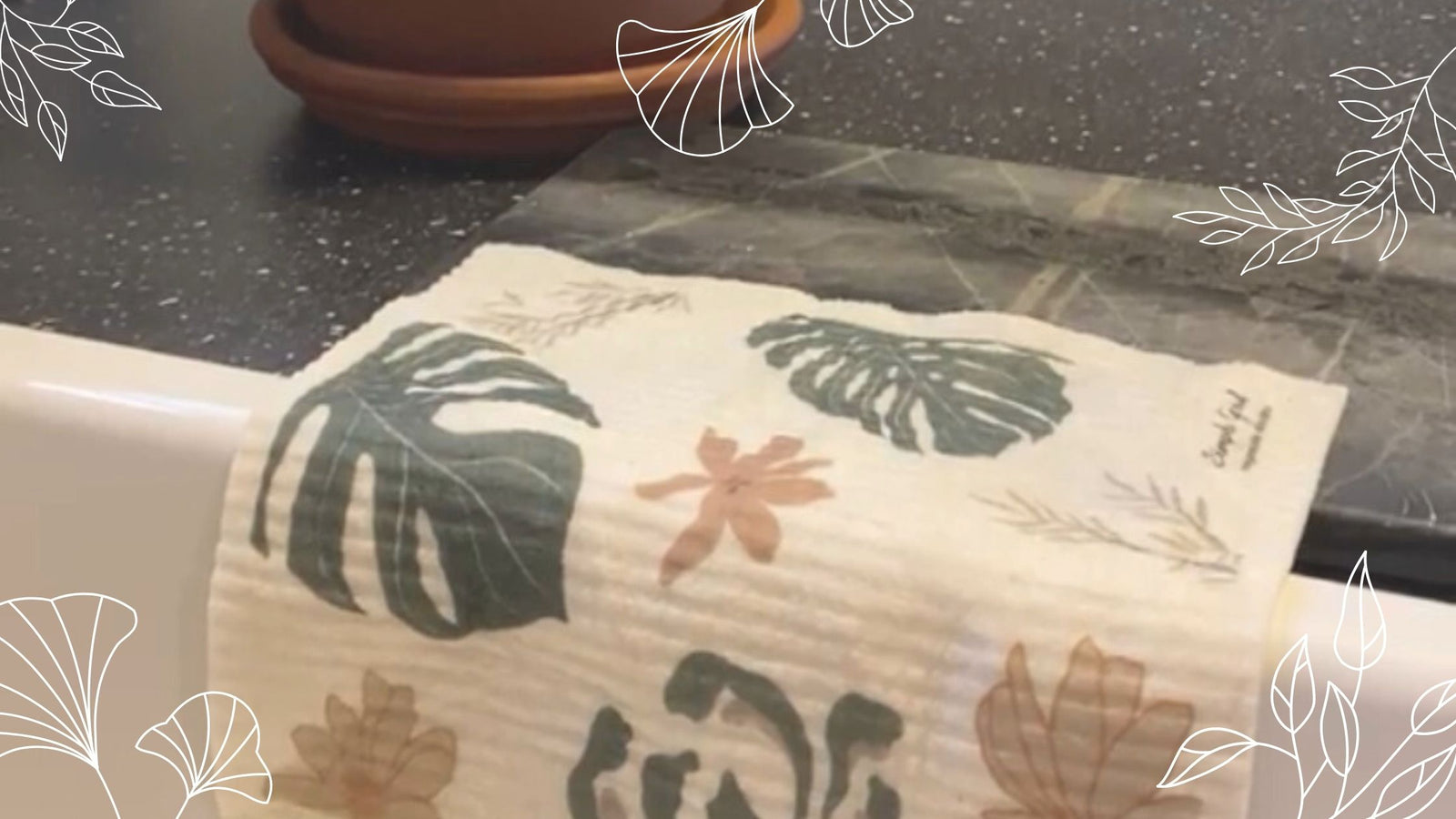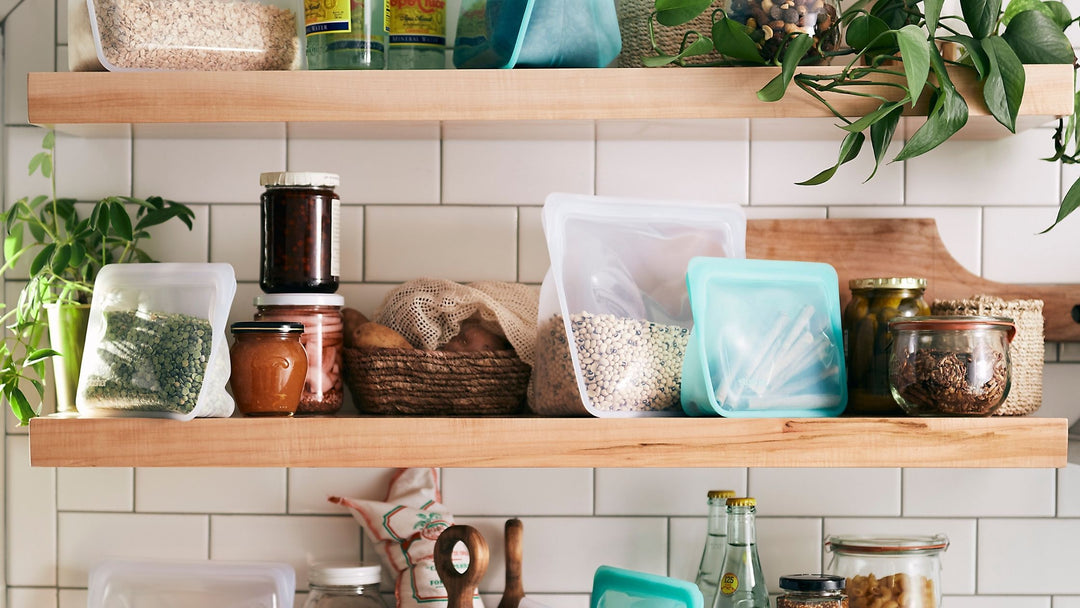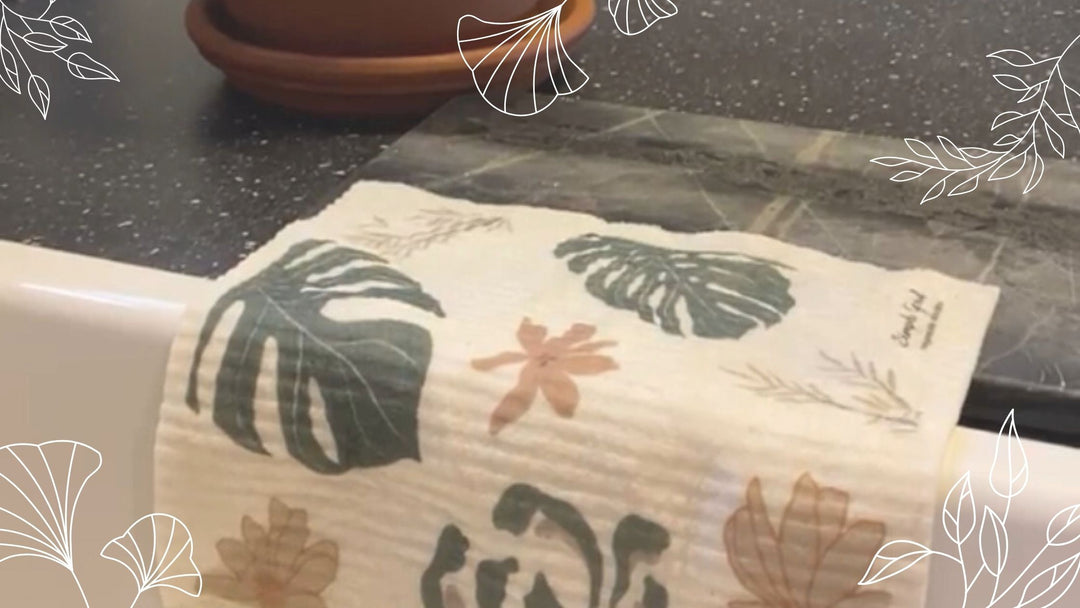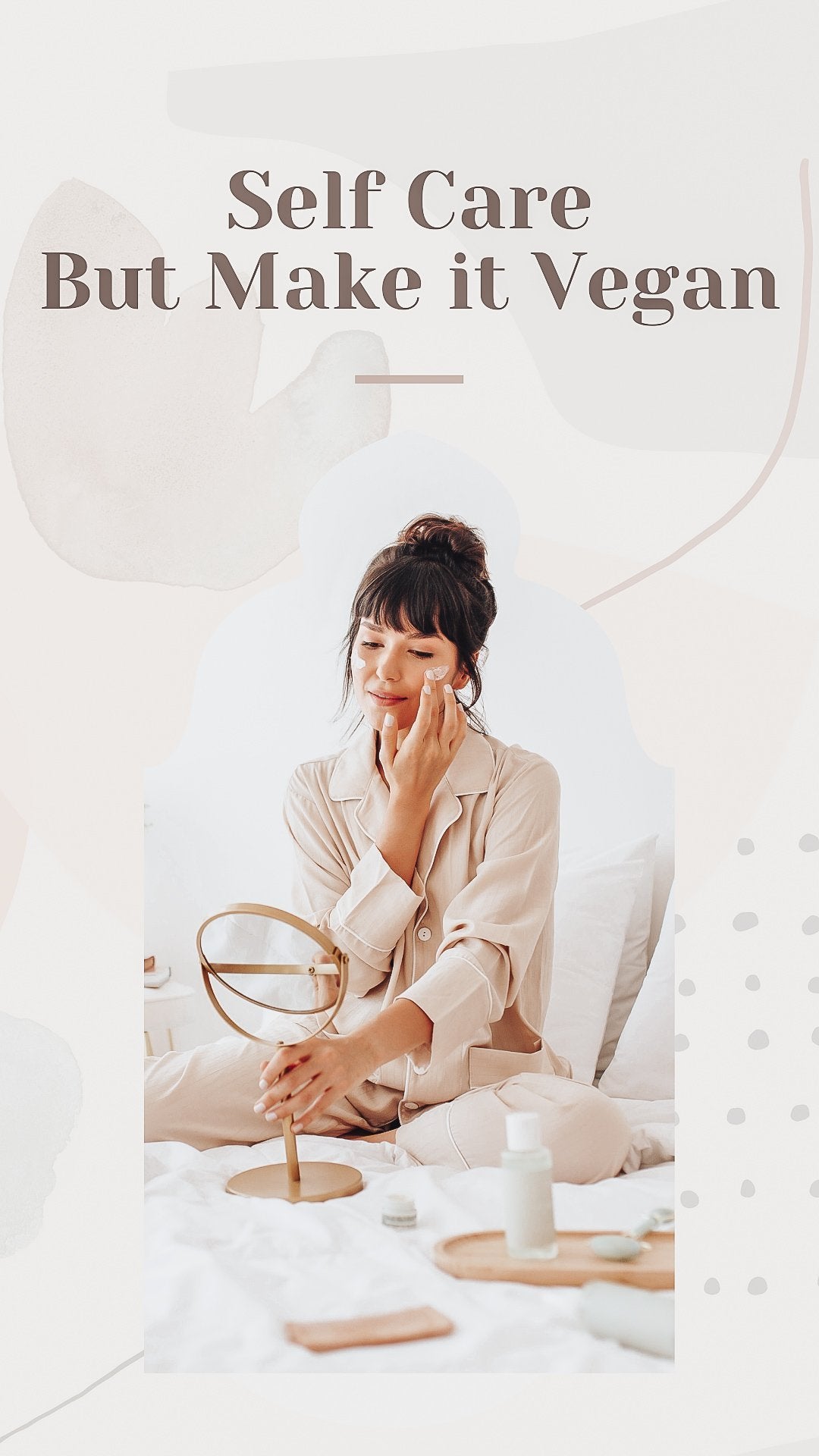Why You Should Swap Paper Towels for Swedish Dishcloths

Are you a paper towel addict? I was, I admit it. When retailers like Costco made paper towels so affordable, I think many of us stopped caring how many we used. But after a while, the guilt set in – single use products are very wasteful and bad for the environment. So, on my imperfect journey to living more sustainably, reducing the number of disposable products like paper towels was a top priority. I cringe just thinking about how many trees we sacrifice to create a product we use for mere seconds and toss in the garbage!
Knowing the reasons why it is important to stop using paper towels helped me to change my bad habits. So, if you’re wondering what kind of impact single use paper towels have on the environment, you’ve come to the right place! Here is what I learned:
The Impact Paper Towels Have on the Planet
- Every day, over 3,000 tons of paper towel waste is produced in the US alone
- Almost 270,000 trees are either flushed or dumped in landfills every day
- To make one ton of paper towels, 17 trees are cut down and 20,000 gallons of water are consumed
- Decomposing paper towels produce methane gas. Methane gas is a leading cause of global warming
Gross, right? And here’s one more fact: According to the EPA, paper is the second largest source of waste coming from American homes. What makes it even worse is that used paper towels cannot be recycled since they are contaminated, so 100% of all paper towels wind up in the landfill.
That’s enough with the depressing paper towel stats, let’s do something about this!
I remember how good it felt to stop buying other single use and plastic products like Ziploc snack bags, plastic toothbrushes and water bottles. It did take a little time to unlearn these bad habits and find affordable substitutes, but better habits have quickly become second nature. Not only did it feel good to create less daily trash and reduce the amount of plastic in our household, but it also felt great to save the money we typically waste on single use items. Let’s take a closer look:
Americans use around 13 billion pounds of paper towels each year. This breaks down to a staggering 40 pounds or about 80 rolls per person, per year. So, if you live in a household of 4 – that’s a staggering 320 rolls a year! OUCH. If you consider a roll of Bounty paper towels costs about $1.50, you can see how a family of 4 can easily spend $480 a year just on paper towels alone! Plus let’s not forget about cleaning wipes. Most people do not realize cleaning wipes such as Clorox wipes, are not made from paper – they are made from plastic. They are marketed as convenient because the toxic cleaning solution is already on the wipe. I had no idea how much time I was wasting spraying cleaning solution <eye roll>. Thanks Clorox for giving me my life back! Believe me, no one ever even bothered adding up how much time you save by buying wipes already loaded with cleaning solution – because there’s nothing significant to measure. These wipes have become another single use product we toss in the trash without realizing they are made from plastic and will never fully decompose. Oh – and the EWG (Environmental Working Group) grades Clorox wipes a D for asthma, respiratory, developmental, reproductive and environmental concerns.
What are Swedish Dishcloths?
Swedish dishcloths are nothing new. In 1949, a Swedish engineer named Curt Lindquist decided to take his sponge and put it in a meat grinder, added some cotton and there you have it - the first dishcloth. These cloths became a true breakthrough in household cleaning products. Dishcloths are reusable, biodegradable and ultra-affordable - not to mention highly effective. They’re widely used throughout Scandinavian countries like Sweden, Finland, Norway, Denmark and Iceland to clean surfaces like glass, countertops, porcelain, plastic, granite, tile, and more. It’s no surprise that Scandinavian countries are the most eco-friendly countries on the planet. Not only have they made coziness an artform, but they are also considered to be the happiest people on earth and have somehow have managed to live their lives without wasting paper towels on the daily!
How Swedish Dishcloths Compare to Sponges
Somehow here in the US and beyond, petroleum has become a main ingredient in our everyday products. This boggles the mind. I can understand the necessity for fossil fuels for transportation and to heat our homes – but how does it sneak into so many of our household, self-care and even baby products? And what about the packaging of nearly every food item we purchase – more plastic - also made using petroleum. Most of the times plastic packaging is not recyclable and is just tossed right in the trash!
It wasn’t shocking to find out that every day sponges are made from petroleum-based polyurethane and other man-made materials and chemicals like triclosan, a toxic chemical that has been linked to cancer, skin irritation and developmental toxicity. Triclosan is an anti-microbial and pesticide, and has been found in 60% of our waterways, further polluting marine life and the environment. So if you’re like me and sit and wonder how our planet got to the terrible place it’s in today, thank the geniuses who make nearly everything we use from chemicals and fossil-fuels!
The plastic sponges we use are porous. This quality allows them to absorb water and create suds. Those suds make us feel like we are cleaning superheroes! But what we don’t realize is that plastic traps the water and serves as a breeding ground for odor-causing mold, mildew, and bacteria. Manufacturers add the chemical triclosan to give the sponge anti-bacterial and odor preventing qualities. But, it only works for so long before the stink sets in and we deem the sponge unusable, toss it in the trash – and buy more. This is a sales tactic, is intentional and by design. Unfortunately, this tactic applies to so many products we use and throw into the trash every day! And to brighten your day even more, when this trash is made from plastic, it takes hundreds of years to break down into smaller pieces of plastic called microplastics, and we all know how awful microplastics are for our health, waterways and wildlife.
Because Swedish dishcloths are made from natural cotton and tree pulp, they do not trap water and air-dry. Although they can absorb a whopping 15 times their weight in water, as long as you squeeze the water out after each use they will dry naturally and quickly, before any odor causing bacteria starts to grow. No more foul odors and no toxic chemicals needed?! So long stinky sponges!
How to Clean Swedish Dishcloths
One of my favorite things about Swedish dishcloths is how easy they are to clean. All Swedish dishcloths are machine washable. Simply toss them in the wash with your laundry and use your normal detergent. Do not put them in the dryer and leave them out to air-dry instead. Not doing the wash for a while? No problem – toss them in the top rack of your dishwasher. If you prefer handwashing with natural ingredients, you can clean dishcloths in the sink using castile soap and a little vinegar. And for those of you that prefer using bleach, Swedish dishcloths can withstand a little bleach too! There are so many ways to refresh these bad boys and keep them looking good as new.
How Long Do Swedish Dishcloths Last?
Maybe you’re wondering how many times you can wash and reuse before they have to go in the trash. Swedish dishcloths last the equivalent of a staggering 17 rolls of paper towels. Some of them come in adorable designs that will not fade in the wash! From a cost perspective,17 rolls of paper towels will cost around $26. If you compare that to the cost of one single dishcloth (around $6), you’re saving $20 – so worth it! I’ve had Swedish dishcloths last anywhere from 8 months to more than a year. Add in the benefits of them being non-toxic, biodegradable and backyard compostable, it’s no wonder why they’re used in Nordic homes and why so many Americans are making the switch!
From Superfan to Making Our Own
My first experience with Swedish dishcloths was about 5 years ago, prior to opening Simple Good. I had been given one by a family member and had no idea what it was or how to use it. Before I knew it, I was using it to clean surfaces in my kitchen and for dusting. I began to prefer it over paper towels because I could simply go the sink, rinse it, and reuse it. They were so much more durable, didn’t tear and were more absorbent. I began dusting using only a wet dishcloth and realized that for certain jobs, cleaning more naturally was just fine. I didn’t need to purchase different types of cleaners for every job and introduce more chemicals into our home. I like to think Swedish dishcloths were an important step in our journey to opening Simple Good. Not even a year after opening the shop, I designed and began to offer my own Swedish dishcloths! Now they're a staple at home and in the shop. And if you are wondering how to get that baked on grease off your pots and pans, we also offer more traditional sponges made from the same materials as Swedish dishcloths. The best thing about them is that the scouring part is made from coconuts - not plastic! Check them out!
I always like to test drive products before introducing them to our customers. So much of what we do at Simple Good is about education. A lot of times we will actually convince people they don’t need things! Many would say that’s not a strategy for growing a business but I can’t disagree more. I’d much rather grow a business based on trust and to enhance a shopping experience with a new perspective.
A bonus is when I get to learn from our customers as well. One of the best ideas a customer told me was that she brought her Swedish dishcloth to the office to keep her workspace clean. She said it was so much smaller than a roll of paper towels, was more convenient and it made so much more sense. Genius!
There are so many simple and affordable changes you can make at home to be more sustainable. And we are definitely not here to tell you it’s about buying more things or tossing old things for new things. When your not-so-eco-friendly products become unusable, that's the perfect time to seek out better alternatives!






